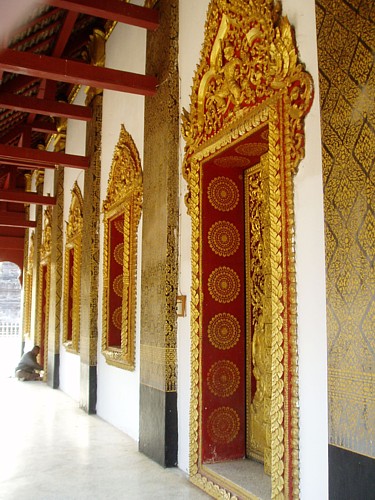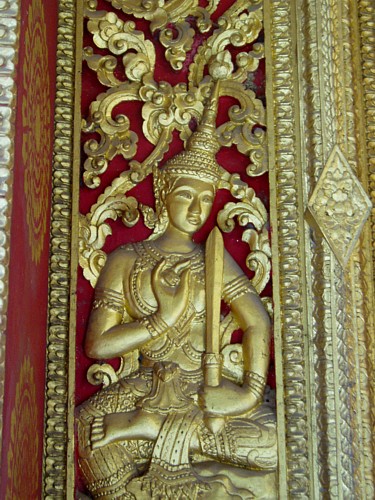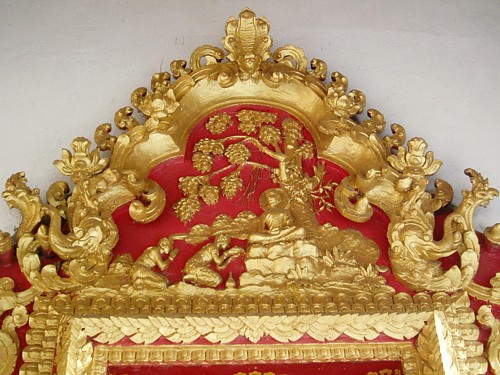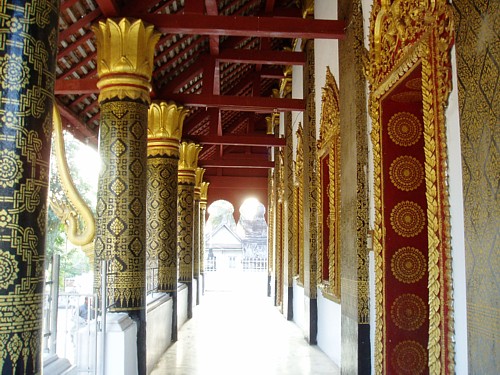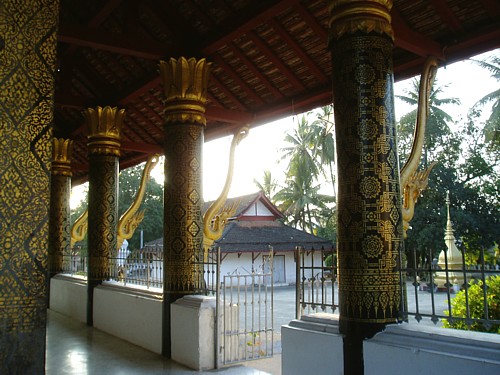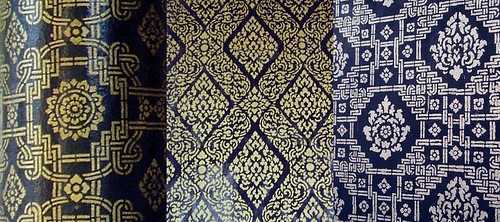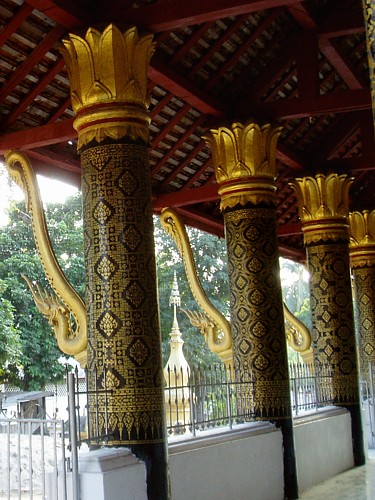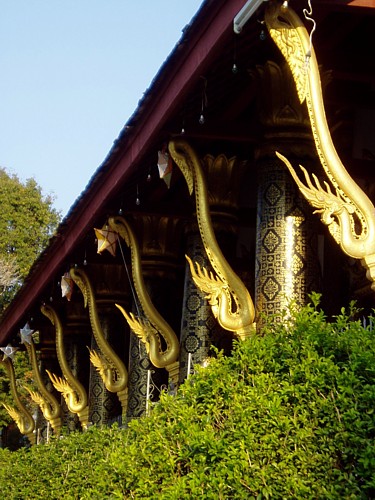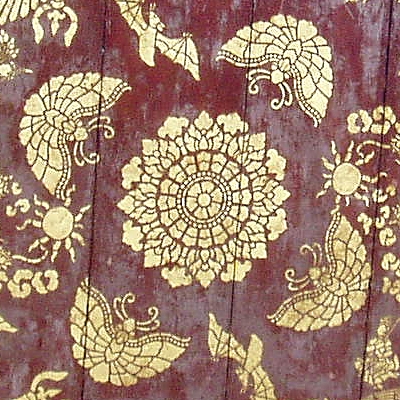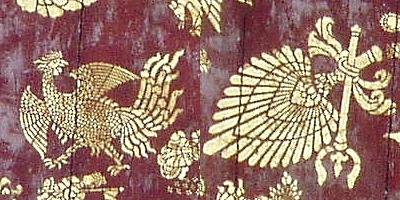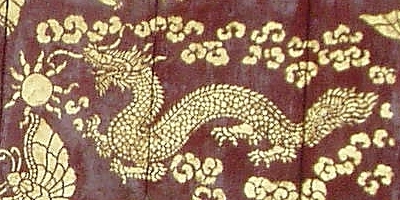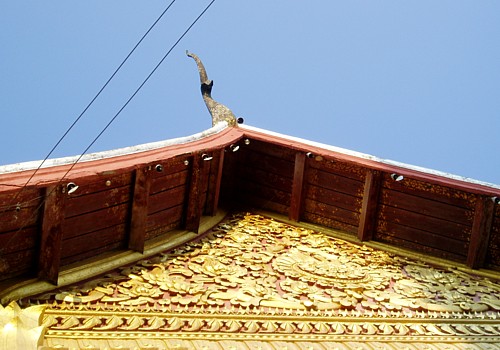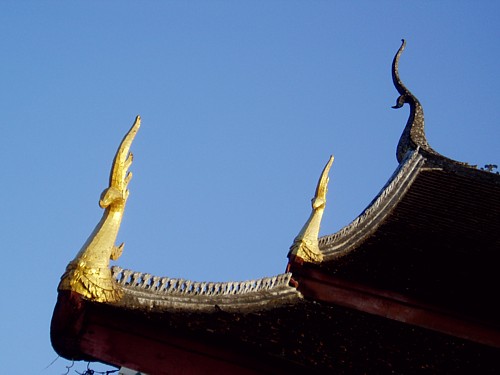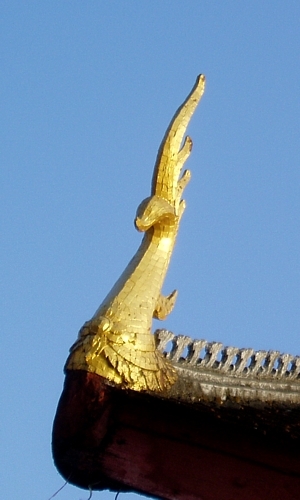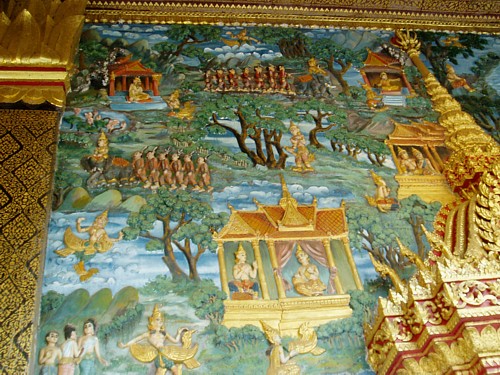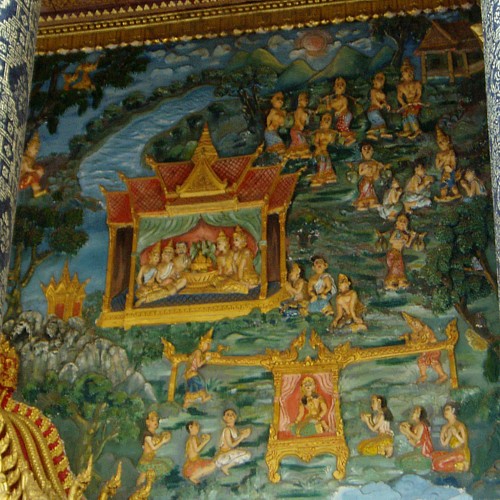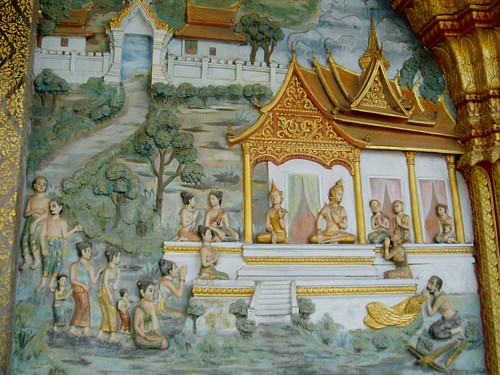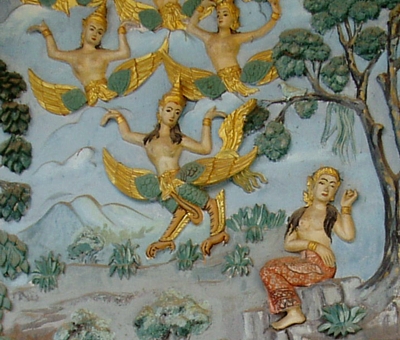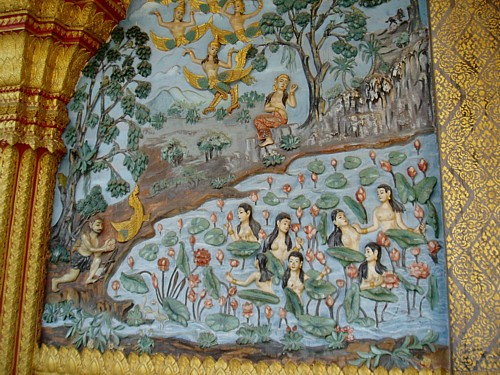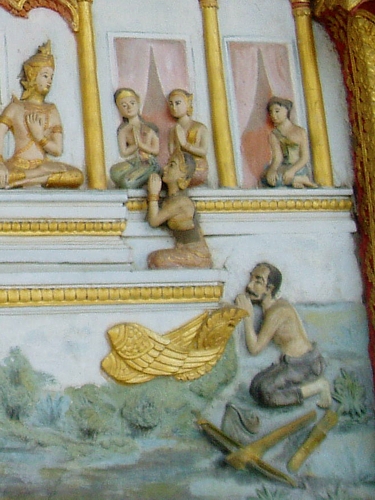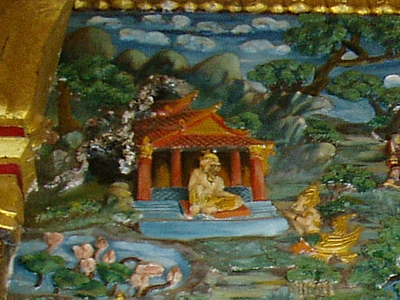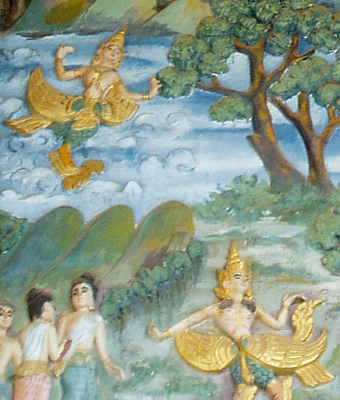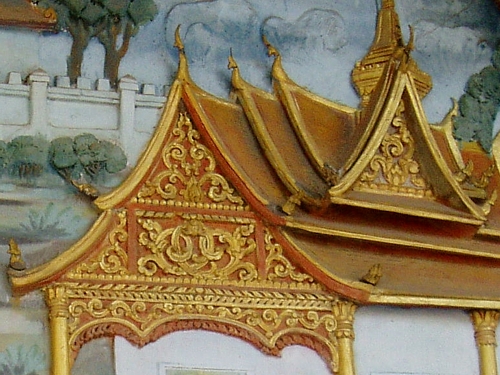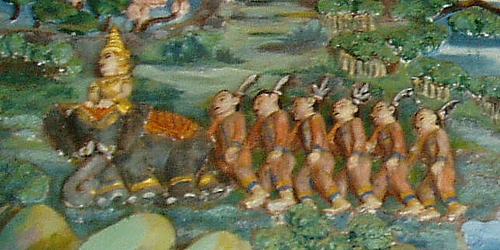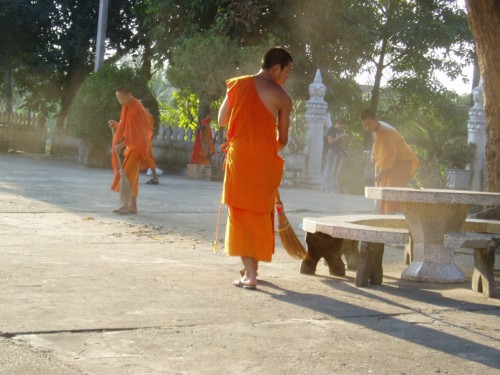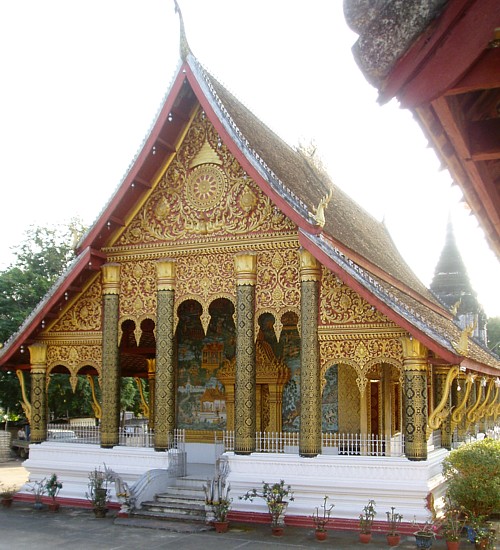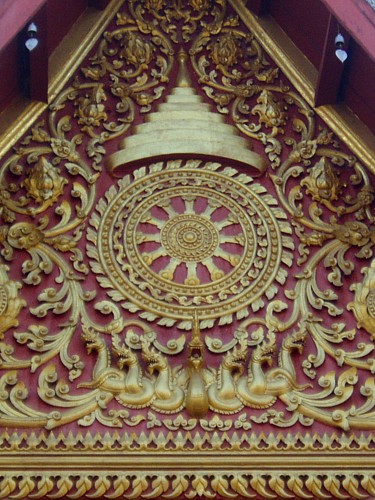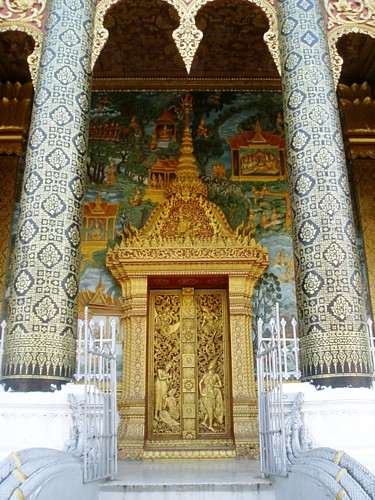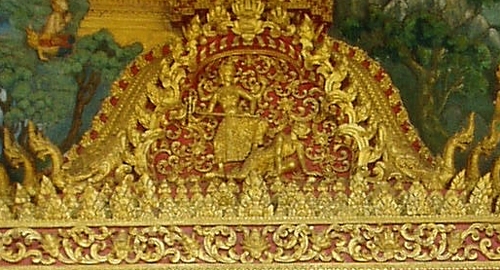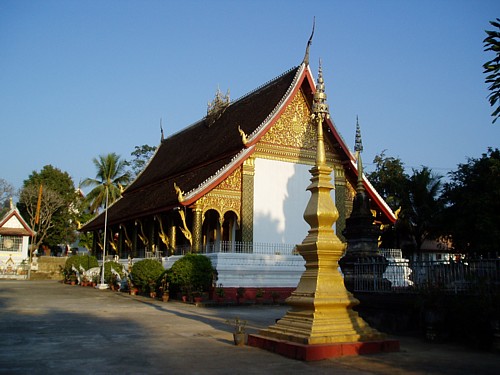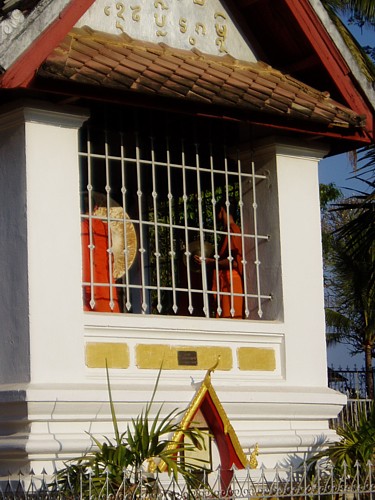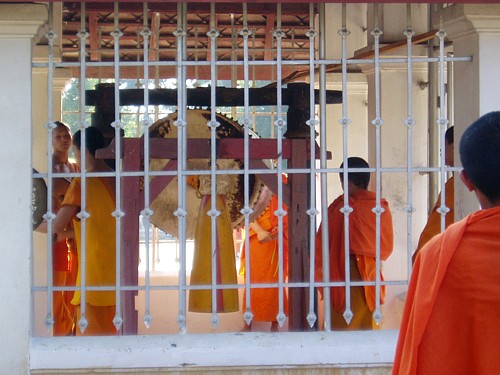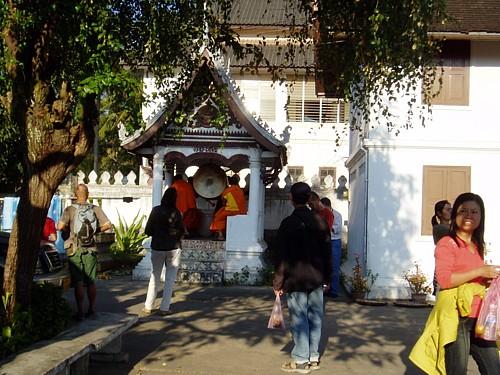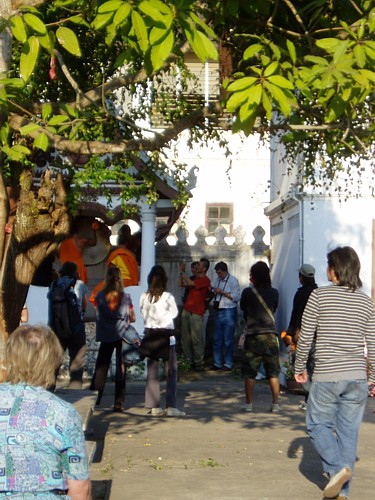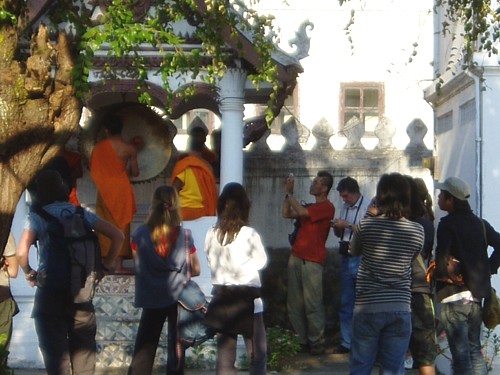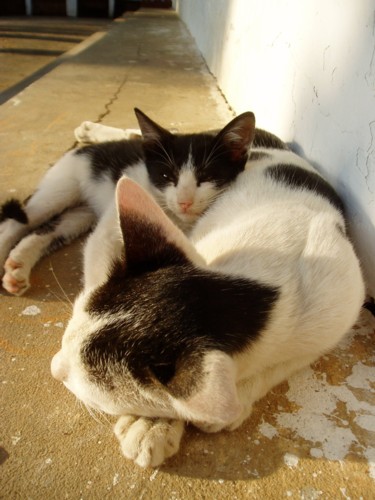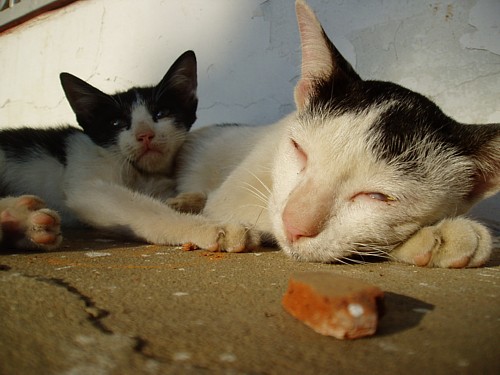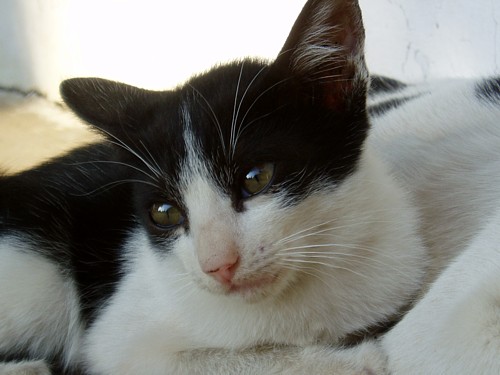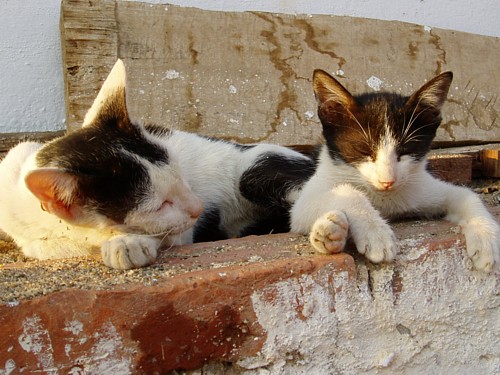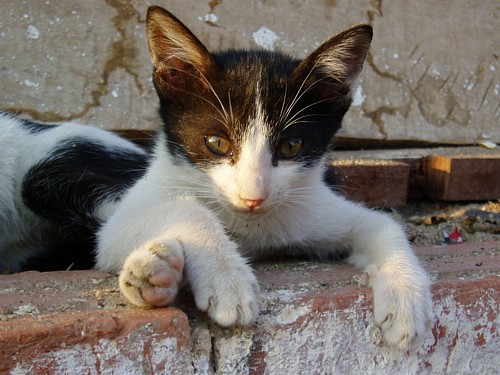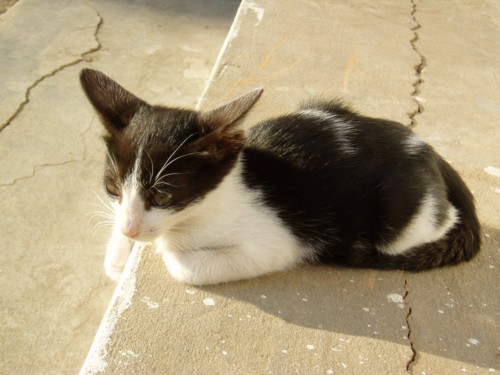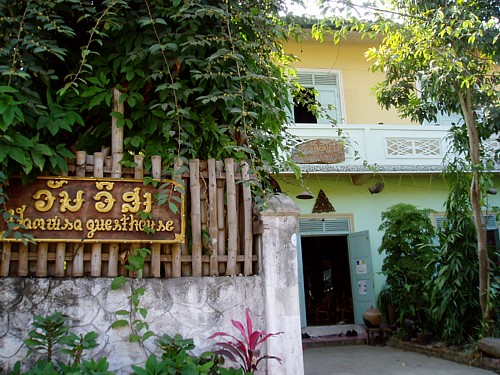
The entrance, where new guests are greeted with a cup of fruity tea:
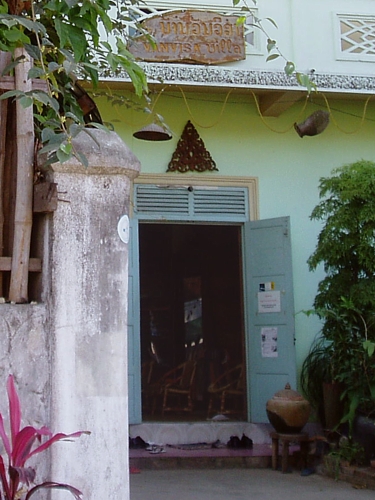
Sometimes it seemed that it didn't matter if one wasn't a guest - he/she would still be welcomed & served tea anyway =) This place felt a lot more like a favourite aunt's house rather than a guesthouse.
Facing the entrance is a wooden cabinet filled with the
owner's collection of weavings, & to the right is a little living room with black & white family photos from another era. In the space beneath the stairs, there are shelves with even more weavings & books, including a cookbook,
Food & Travel Laos, co-authored by the owner.
For most of the cat's stay, a wizened smiling old lady was parked on a wicker chair near the entrance, wrapped up in scarves & attended to by various female family members who busied themselves with watching Thai channels on TV, in between cleaning & running the guesthouse. Months later, when reading about the
cookbook online, the cat realised that the old lady was most probably the
owner's aunt, mentioned
here &
here:
Mr.Suthipong Suriya received his culinary training in Luang Prabang court cuisine from Lady Bua, a Luang Prabang royalty, and her niece, Mrs.Vandara Amphayphone in the past few years.The writer has a strong emotional attachment with Laos and a personal home cooking experiences with Lady Bua Lattamali who was married to Luang Prabang royalty. Lady Bua used to work as chef assistant in Luang Prabang court in a number of ceremonies. She is now 96 and leads a simple life transferring cooking skill to her only niece, Vandara Amphayphone. She also once assisted Phia Sing Chaleunsilp, the former chef and Master of Ceremony of Luang Prabang court. Phia Sing died in 1967 and left behind an invaluable manuscript on original court cuisines.The cat had made a booking through this
website, & in this peak season (cool season + Christmas + New Year) there was no jacking up of room rates, unlike many other establishments in town. Cat's room in the front section of the house:
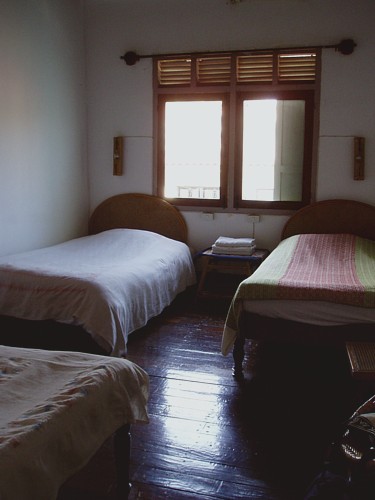
It had booked a double room for USD8 (no single rooms), but somehow it turned out to be a triple (for the same price)...enough room for the cat to
swing itself around. About three rooms in this section share two bathrooms with 'antlers' serving as towel hooks...the whole place was decorated with all sorts of interesting items, including a spear along the staircase...! The rear section has larger ensuite rooms, & in between both sections is the kitchen & dining area where cooking classes are sometimes held.
Unable to find any power sockets within the room, the cat had to charge its camera batteries using one outside its room. However, the socket was at eye level & as loose as all Lao power sockets are. Everything had to be held in place with electrical tape, with the long wire dangling down onto the floor where the charger rested. The cat hid everything behind a tall potted plant that was just of the perfect height, to prevent anyone from tripping over the charger =P This, & the lack of air conditioning which would be the bane of tourists in the hazy & hot seasons, are the only drawbacks of this
guesthouse that the cat can think of.
In the garden:
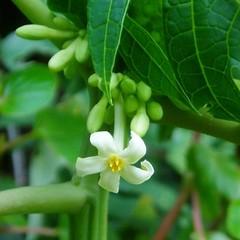


The last flower is
Clitoria ternatea (Var.
pleniflora?) aka. butterfly pea. Once upon a time the cat had to collect 44 of these flowers for its entire class to dissect for an upper secondary Biology practical class, which is why the scientific name remains embedded in the cat's brain till this day. Didn't get to ask if it is used in Lao cooking...the petals are the source of the
blue colouring used in Peranakan food e.g.
Nonya bak chang (steamed glutinous rice dumplings filled with pork, chestnuts, spices, etc) &
kueh (glutinous rice cakes) like
pulut inti &
pulut tai tai.

